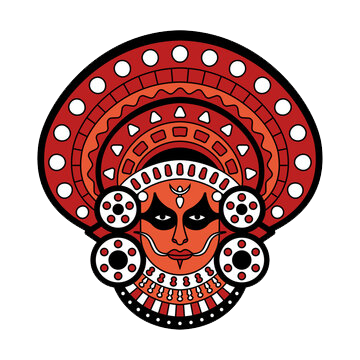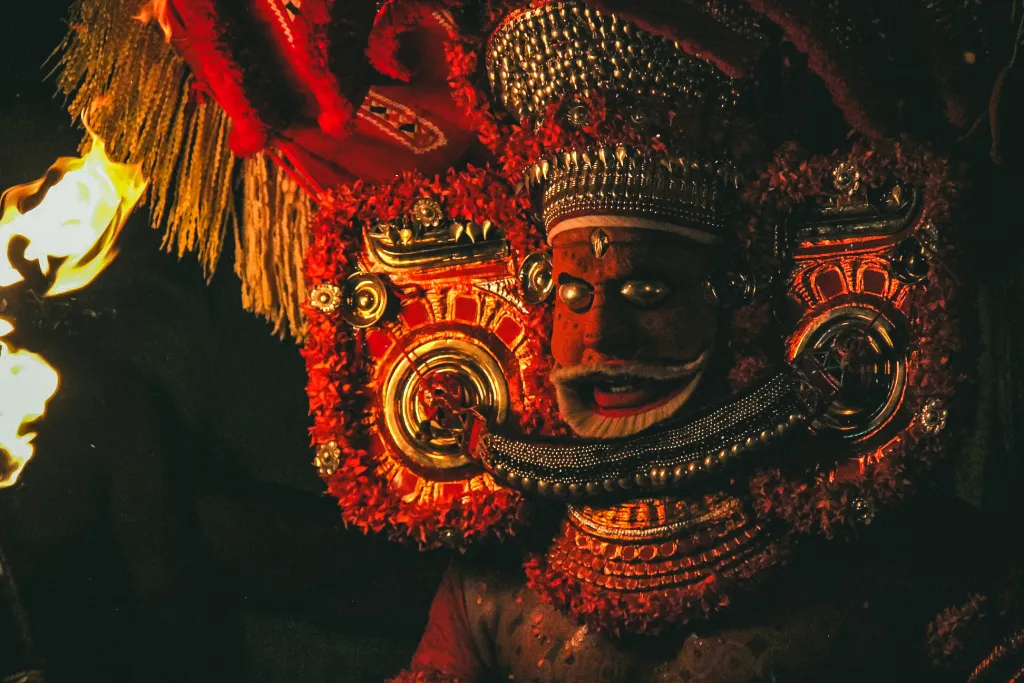
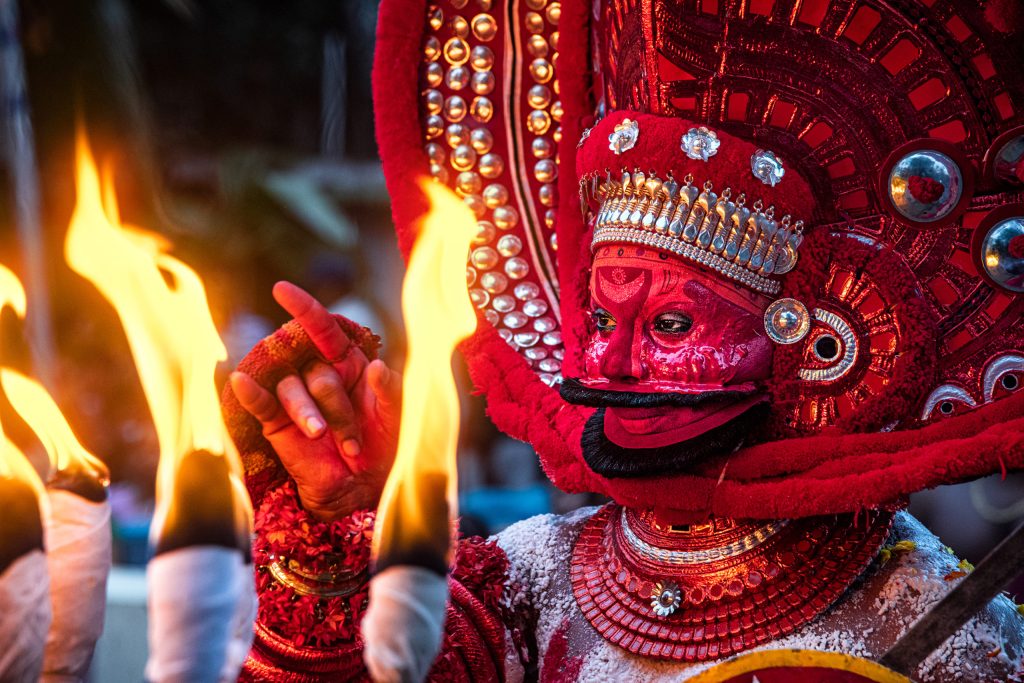
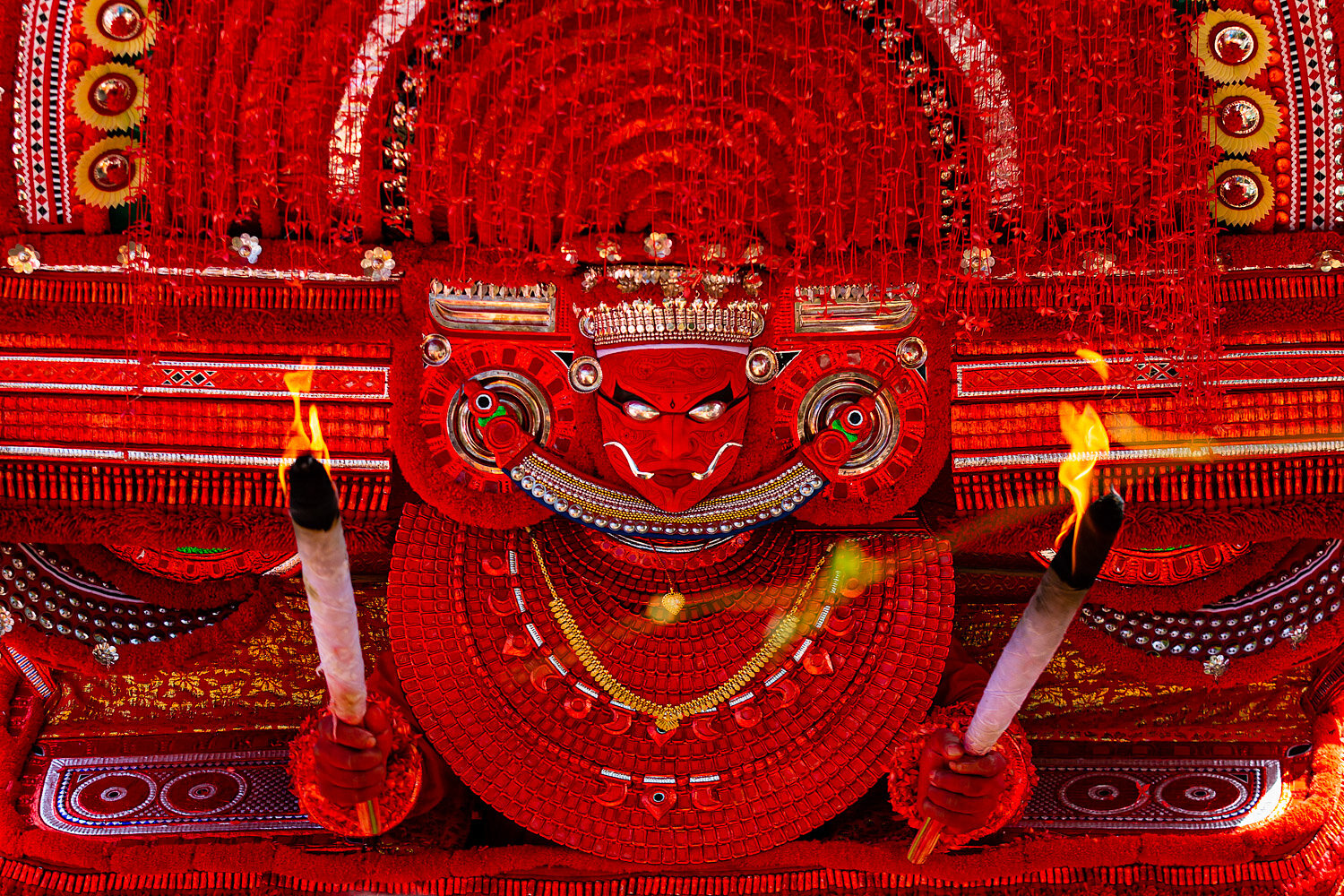
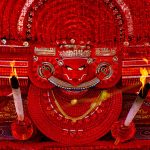
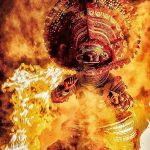
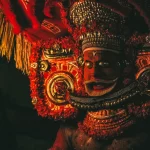
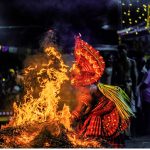
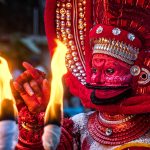
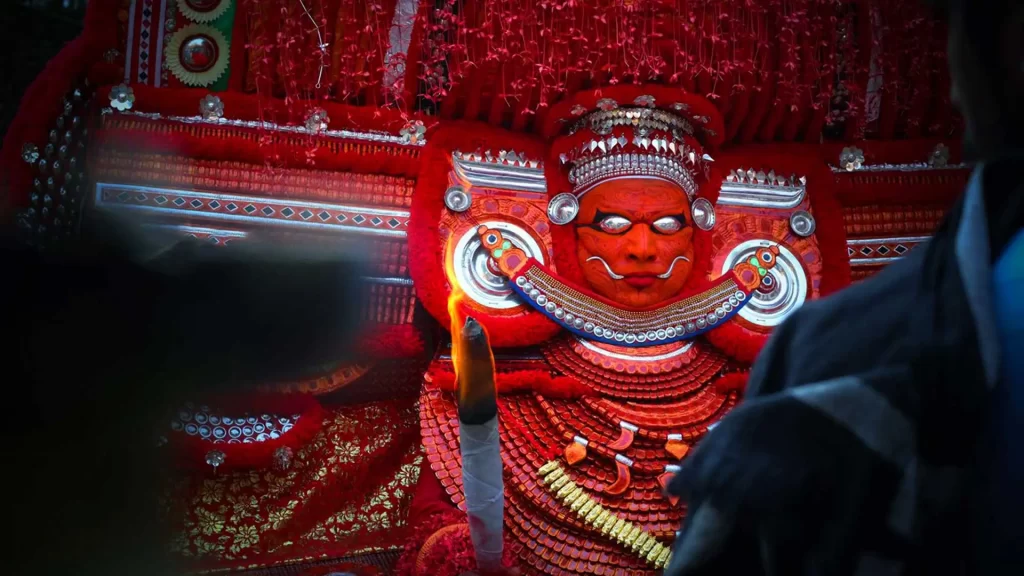
Theyyam is a traditional ritualistic performance art form that originated in the northern part of Kerala, India. It is a vibrant and colorful dance form that incorporates elements of dance, music, and drama, and it holds significant cultural and religious importance in the region. Here are some key aspects of Theyyam:
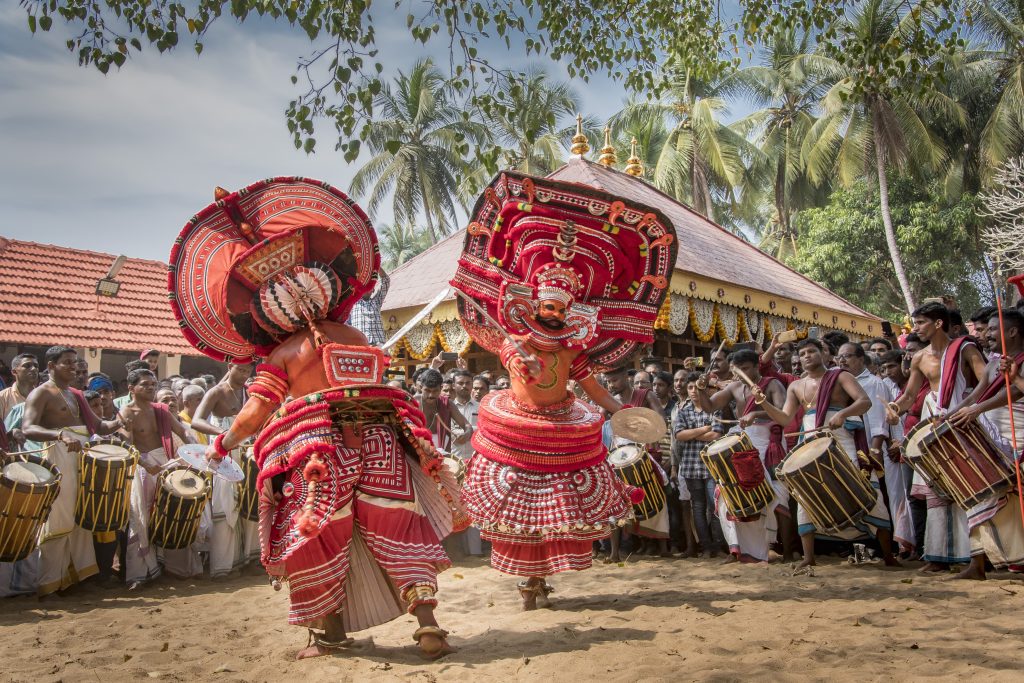
Theyyam is predominantly performed in the Malabar region of Kerala, especially in Kannur and Kasaragod districts.
- Various communities participate in and host Theyyam performances.
- Theyyam is performed in the precincts of temples, and it usually takes place during the festival season.
- The performers, known as “Theyyam artists” or “Theyyakkaran,” belong to specific castes and communities traditionally associated with the art form.
- The performers undergo elaborate rituals and preparations before donning the intricate costumes and makeup.
1. Origin and History:
- Theyyam has ancient roots and is believed to date back to several centuries.
- It is closely associated with the worship of local deities and ancestral spirits.
2. Geographical Presence:
- Theyyam is predominantly performed in the Malabar region of Kerala, especially in Kannur and Kasaragod districts.
- Various communities participate in and host Theyyam performances.
3. Performance and Rituals:
- Theyyam is performed in the precincts of temples, and it usually takes place during the festival season.
- The performers, known as “Theyyam artists” or “Theyyakkaran,” belong to specific castes and communities traditionally associated with the art form.
- The performers undergo elaborate rituals and preparations before donning the intricate costumes and makeup.
4. Costumes and Makeup:
- The costumes worn during Theyyam are elaborate and colorful, often featuring intricate designs and accessories.
- The makeup is a crucial aspect, transforming the performers into divine or supernatural beings. Red and black colors are prominently used.
5. Themes and Characters:
- Theyyam showcases a wide variety of characters, each representing different deities, spirits, or heroes from mythology.
- The performance often involves the possessed dancer embodying the spirit of the deity and communicating with the devotees.
6. Music and Instruments:
- The musical accompaniment is an integral part of Theyyam. Traditional percussion instruments like chenda (drum), chengila (gong), and elathalam (cymbals) are commonly used.
- The rhythm and beats of the music add to the overall dramatic effect of the performance.
7. Significance and Beliefs:
- Theyyam is considered a sacred ritual, and it is believed that the performer is possessed by the deity or spirit being portrayed.
- Devotees seek blessings and advice from the deity during Theyyam performances.
8. Cultural Preservation:
- Despite its traditional roots, Theyyam has evolved and adapted over time, reflecting changes in society.
- Efforts are made to preserve and promote Theyyam as part of Kerala’s rich cultural heritage.
9. Tourism and Cultural Exchange:
- Theyyam has gained attention as a cultural tourism attraction, drawing visitors from around the world to witness its unique and captivating performances.
- Cultural exchange programs and festivals often feature Theyyam to showcase Kerala’s traditional arts.
